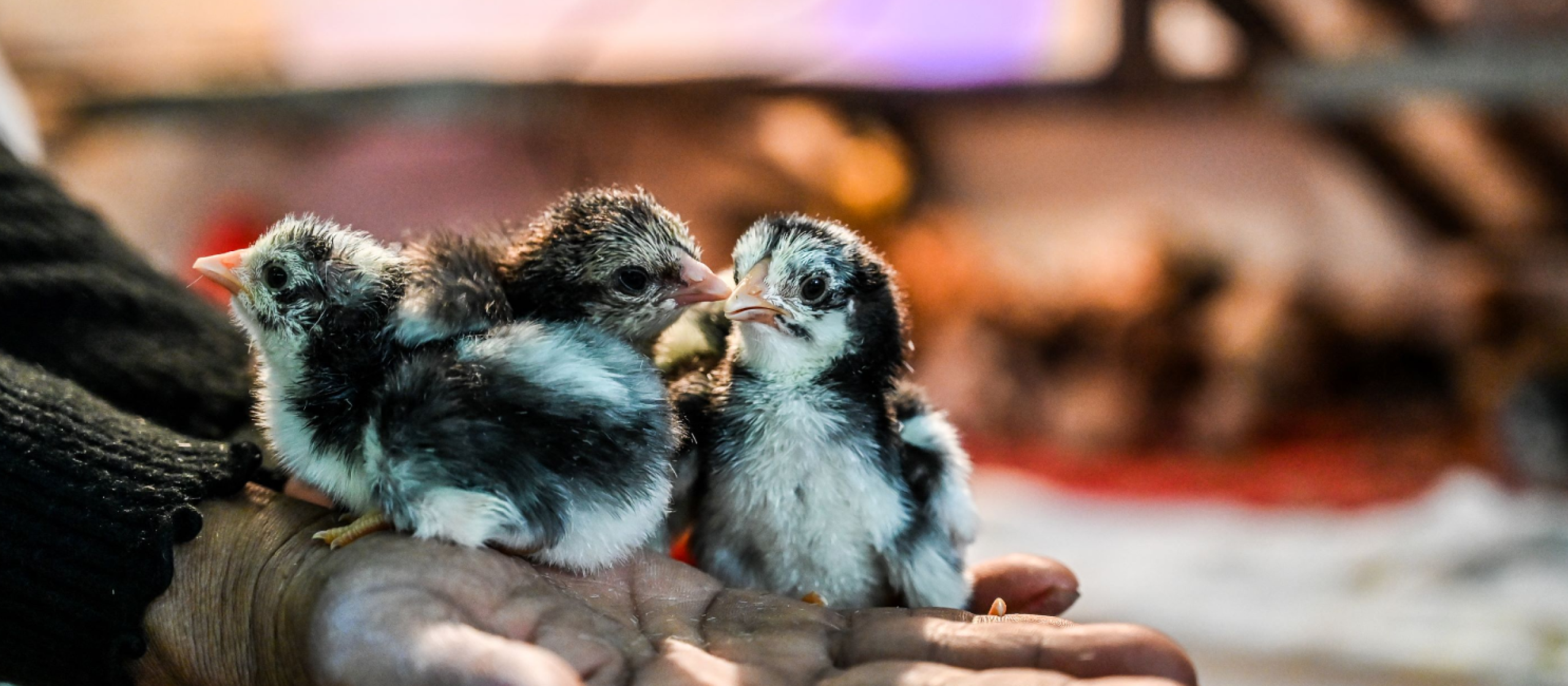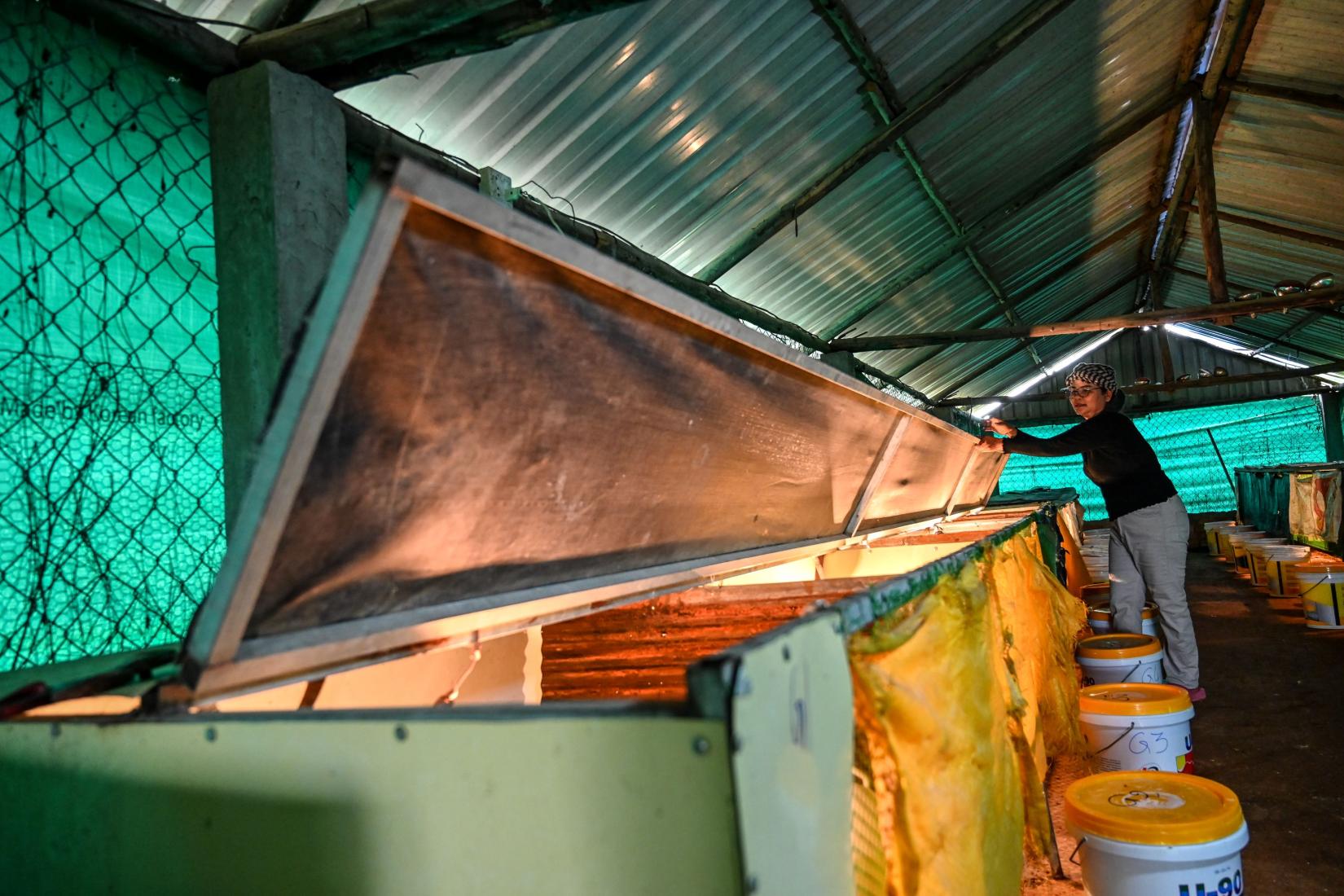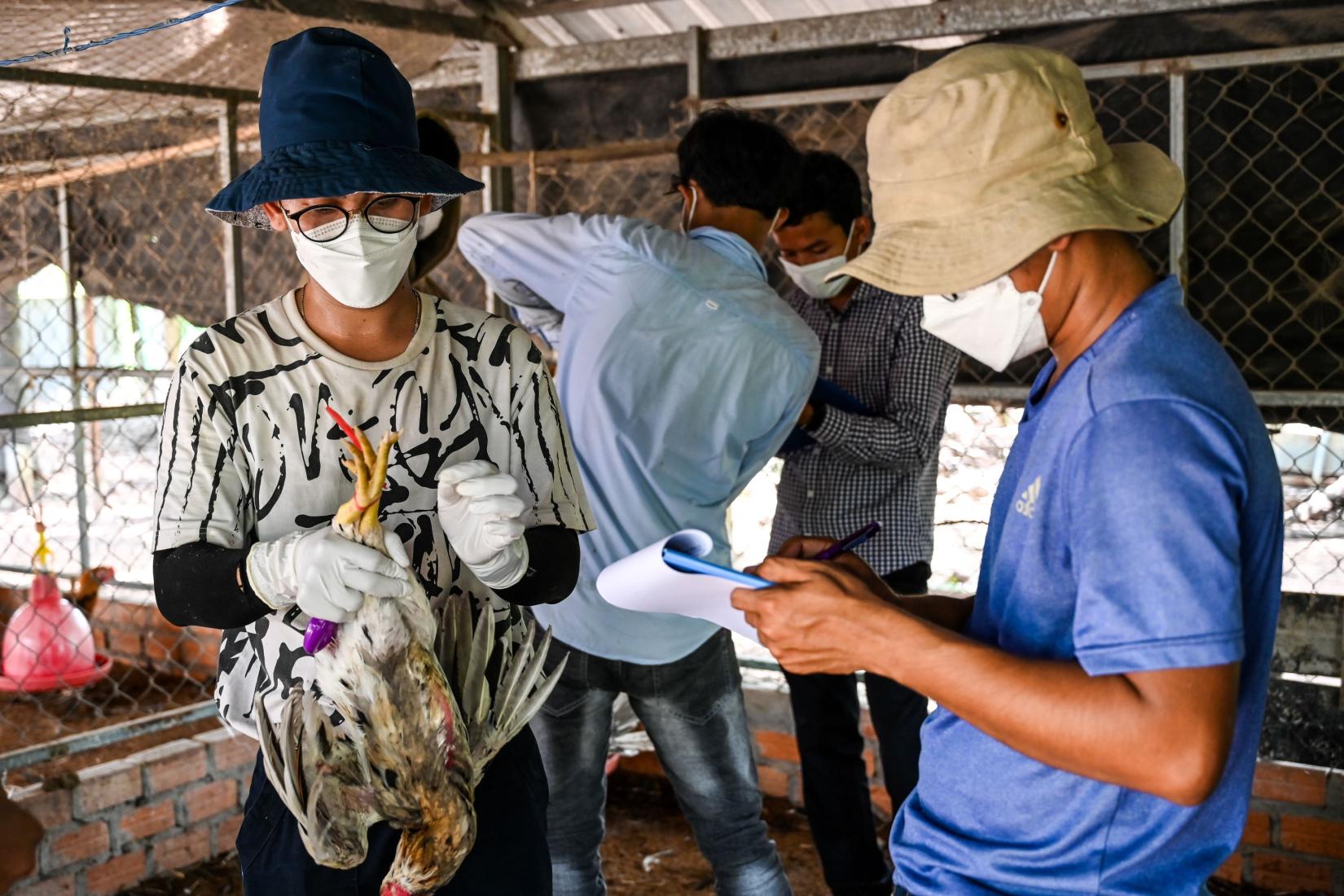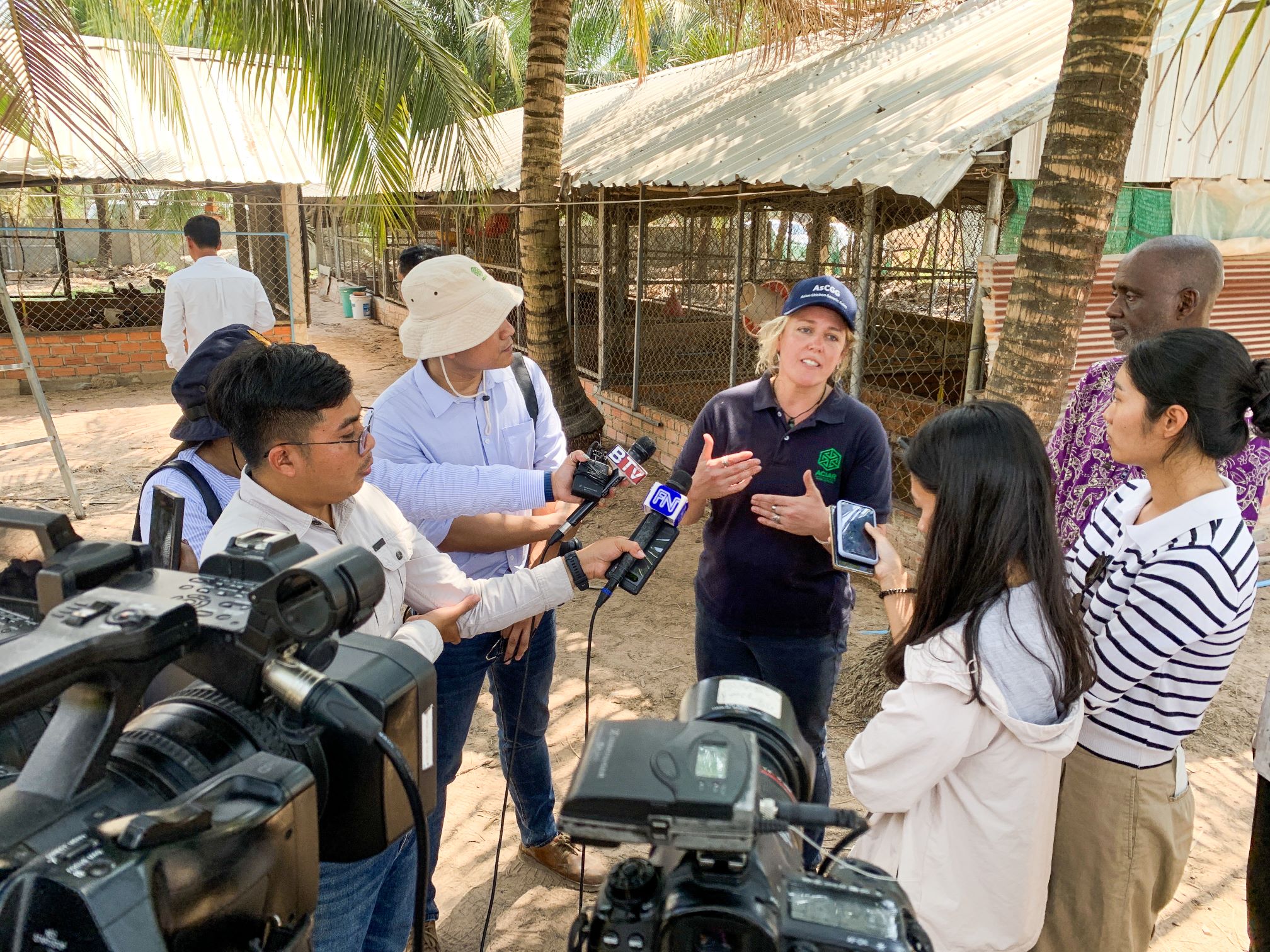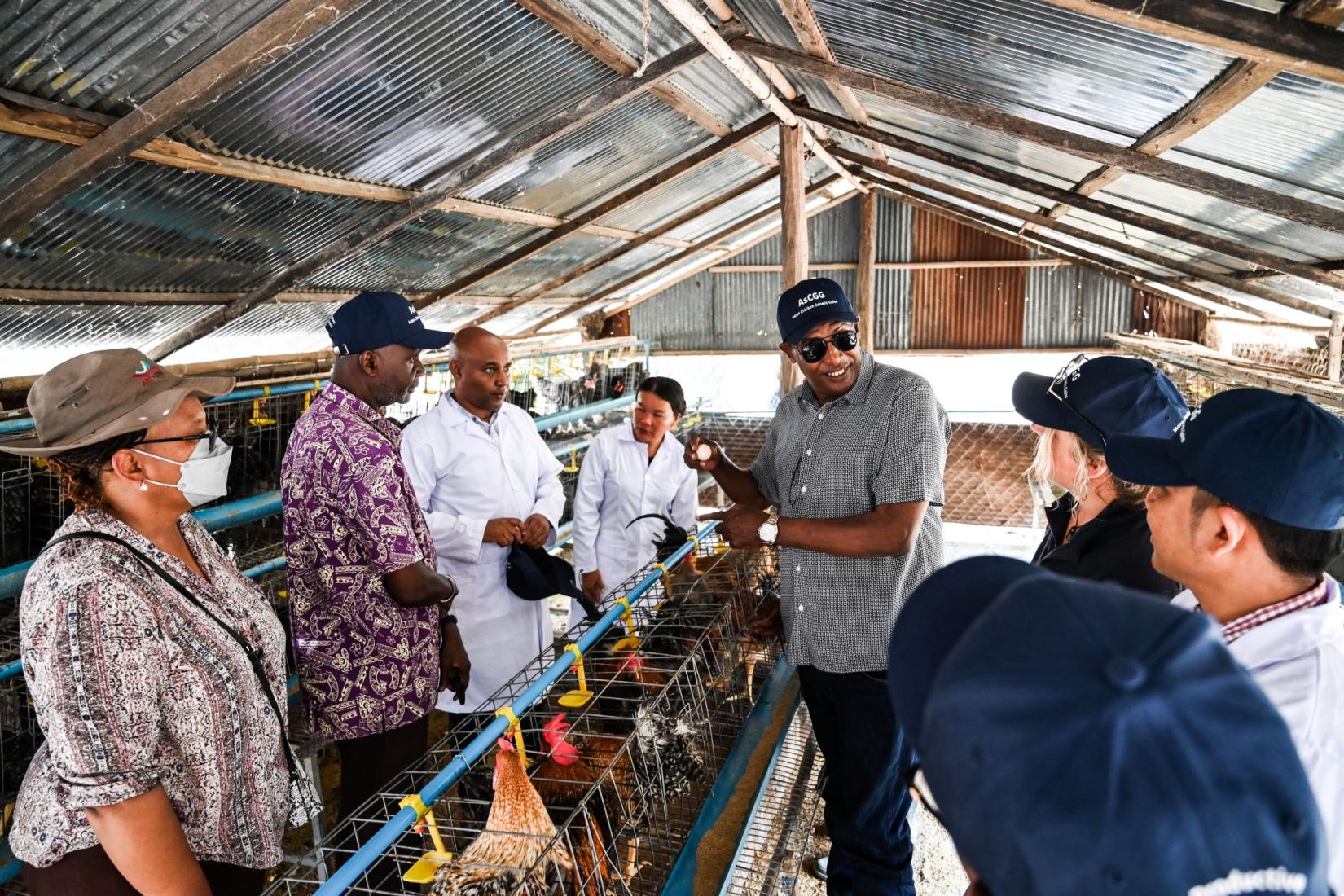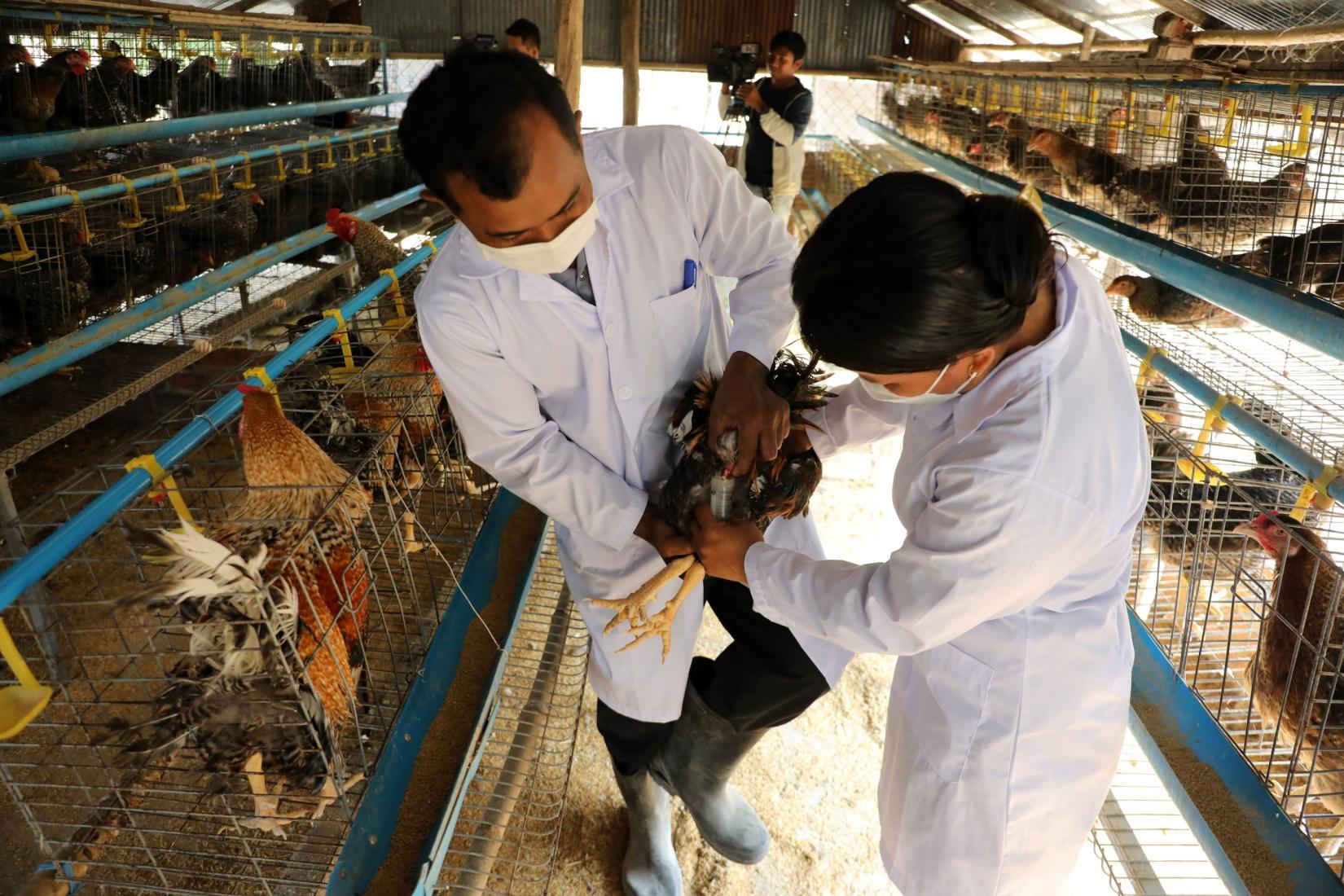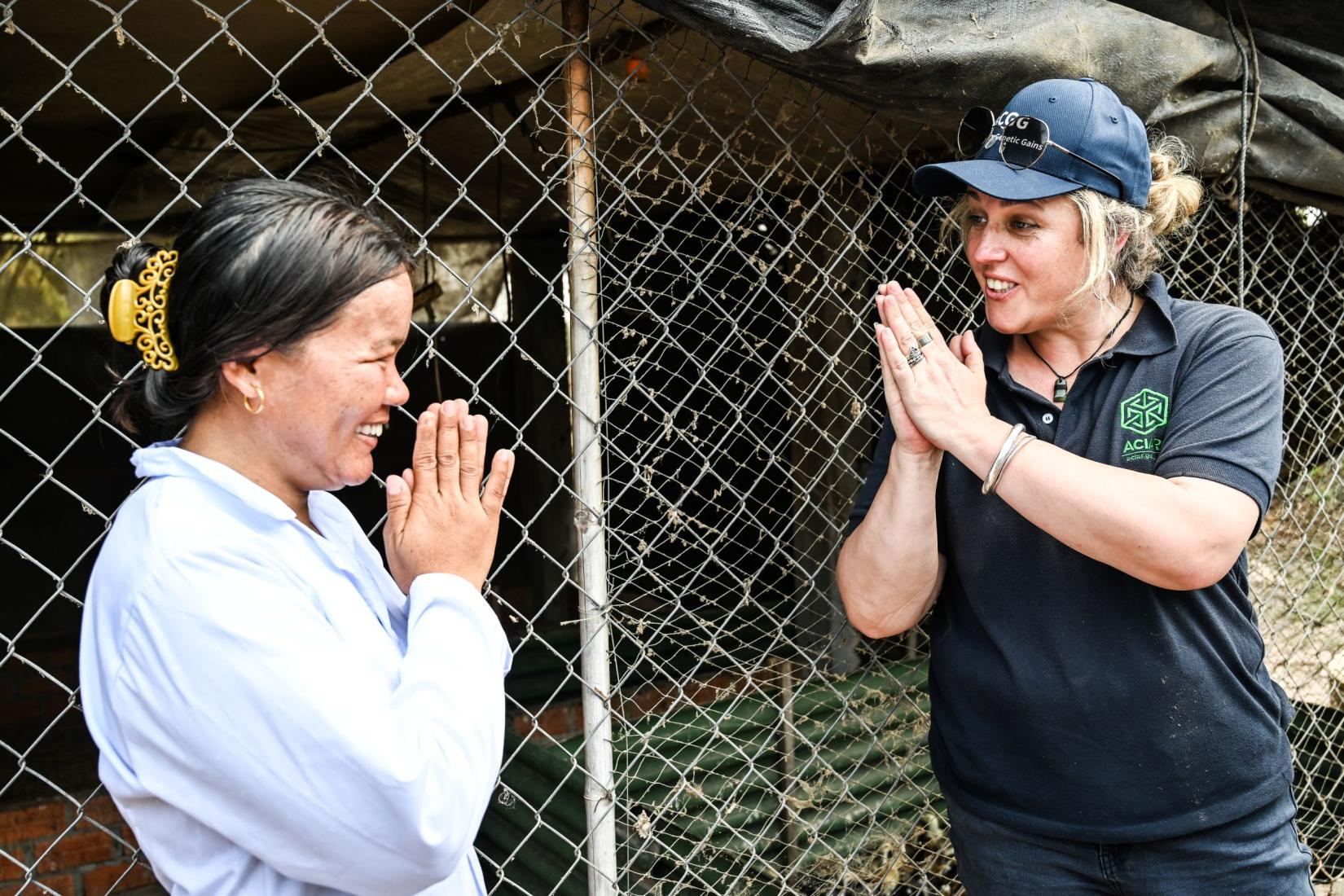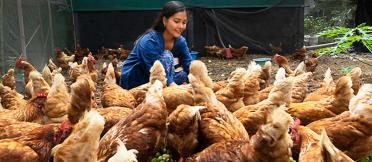The Skouy breed improvement has yet to reach its full potential. To enhance the genetics of the flock, the breeding process will involve 2 to 4 generations of selective breeding until the desired traits are achieved. At that point, the chickens are expected to achieve a body weight of about 1.5 kg within 3.5 months, which is a significant reduction from the previous time of 12 months.
‘We are aiming for an excellent genetic, better-grown chicken but keeping the same taste and look of chicken that local people want to buy. That’s the outcome we want’, said Dr Anna Okello, ACIAR Research Program Manager for Livestock Systems.
The improved Skouy breed is set for release in 2025. Following the recent mid-term project evaluation, ACIAR and partners are considering how the breeding program can be scaled up.
‘We cannot just finish this project here and walk away’, Dr Okello said. ‘Next, we need to think bigger about how we can scale it up and how we take these breeds to different parts of Cambodia to make sure that the food security is there and the livelihood of farmers is also secure.’
According to Dr Sothyra Tum, Director of the National Animal Health and Production Research Insitute, who led the Cambodian research team, ‘This [improved breed of Skouy] will help to meet the growing demand for native chicken meat and eggs in the country and boost the incomes of smallholder farmers.
‘I’d like to see the project scaling up to have more chicken breeder farmers. It can generate the most productive Cambodian chicken breeds, suiting both small- and medium-scale production systems’, he added.
ILRI is now planning to work with Cambodia partners to scale the project to another 4 provinces after the completion of the project in early 2025.
‘We aim to create clusters of hundreds of farmers around each nearby breeding farm’, said ILRI principal scientist Mr Tadelle Dessie.
‘The purpose is for breeding farms to sell their produce to these clusters. This will lead to hundreds of farmers benefiting from the improvements.’
